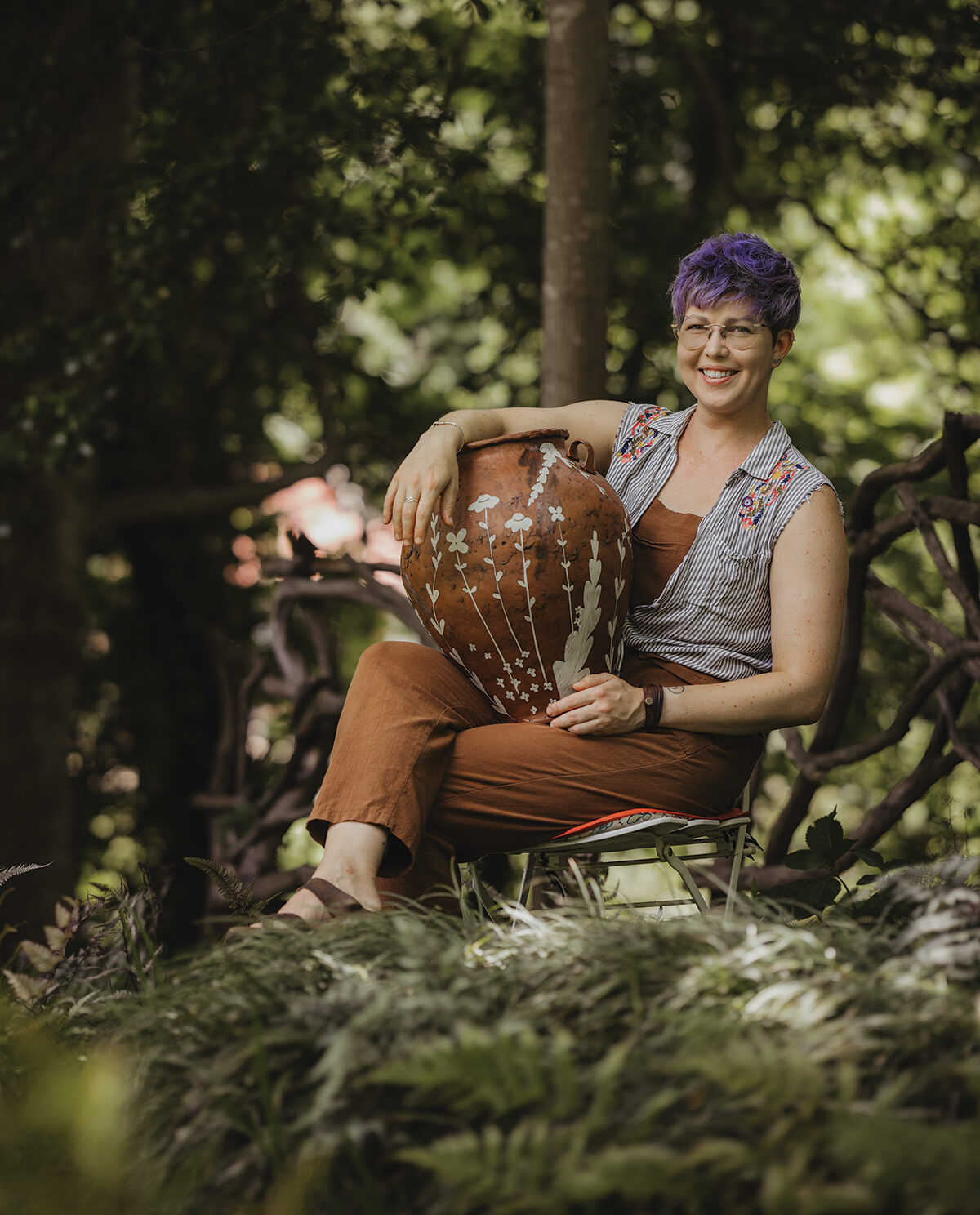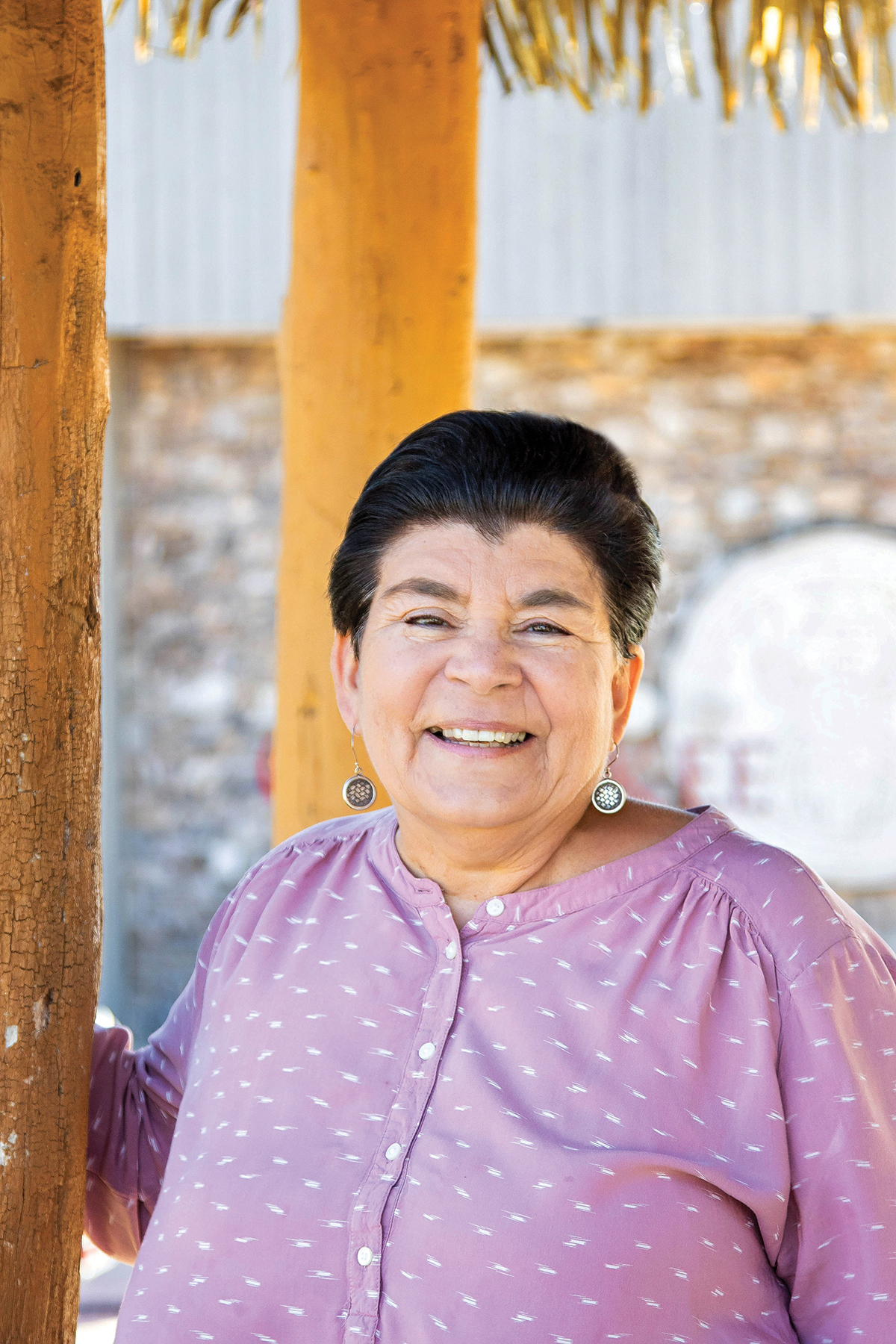Cherokee Basketry exhibit weaves together intergenerational skills

Gabriel Crow, Eye of the Sacred Bird.
When the Center for Craft began discussion about creating a parklet in front of their building on Broadway, research revealed that the area had once been a Cherokee trading route. They reached out to the Cherokee community for guidance and were connected to Mary Thompson, a renowned Eastern Band of Cherokee basket maker. Thompson has served as consulting artist for the outdoor design that will reference Cherokee basketry in its materials, colors, patterns, and structure. “Conceptually, it’s about holding space for Cherokee in downtown,” explains Director of Programs and Curator Marilyn Zapf. “It will be made of white oak and steel, colored to look like the dyes used in basketry and other details with pattens and signage.”
Though the parklet remains a work in progress, inside the Center visitors can immerse themselves in an exhibit by nine Eastern Band Cherokee basket makers. Weaving Across Time: Contemporary Cherokee Basket Making, Land and Identity showcases current work that is rooted in and pays homage to a centuries-old practice, by artists whose ages span decades. Mary Thompson is one of those, as is her sister Betty Maney (their mother was a prolific basket maker), and Mary’s daughter Sarah Thompson. Lucille Lossiah and Ramona Lossie are sisters and were mentors to both 25-year-old Gabriel Crow and 27-year-old Dylan Morgan, who took a class from Crow.
While their skills are at different levels and their artistic expression unique, what they share is a commitment to the old ways and materials — rivercane, white oak, maple and hickory, and bloodroot, walnut and butternut dyes. Remaining true to tradition means harvesting and preparing the materials one will use before weaving begins. Because rivercane in particular is in danger of disappearing — only two to three percent of the plant that once flourished in the area remains — conservation is also strictly observed.
Crow, who grew up in a woodcarving family, began to fully devote himself to basketmaking in 2013, when he was hired as a mentee at Oconaluftee Indian Village. “I first leaned to weave in elementary school,” he says. “But it was at the Village where I learned to make the splints and do all the work. I didn’t know there was a whole process behind it to get to that point. When I started, I couldn’t cut a piece of cane properly to save my life.”

Dylan Morgan, l-r: Basket, 2019. Rivercane, walnut, butternut, bloodroot, hickory; Dart Quiver, 2021. Rivercane, walnut, butternut, bloodroot, hickory; Basket, 2020. Rivercane, bloodroot, walnut, white oak rim.
But he persevered, drawn to the ancient rituals of gathering materials, cutting the splints and dying them, and studying the history of the basket designs and patterns. “At one point, there were thousands of different Native American languages, but a lot of the designs in the baskets are universal. Flowing Water will be Flowing Water.”
The exhibit, says Zapf, was collaboratively curated with the artists, with each choosing the baskets they wanted to show; several of the older basket makers submitted more double-weave baskets, an intricate and skilled technique Lossiah and Lossie are credited with learning, mastering, and reintroducing to Eastern Band Cherokee weavers. That includes next-generation makers like Crow, whose Flowing Water basket is a double weave: “The pattern doesn’t at first look like water, but it makes sense when you think about the way the rays of the sun overlay a creek. I see it in my head and create it.”
Weaving Across Time: Contemporary Cherokee Basket Making, Land and Identity will show at the Center for Craft (Brexler Family Gallery on the main floor) through Friday, April 22. 67 Broadway, centerforcraft.org



